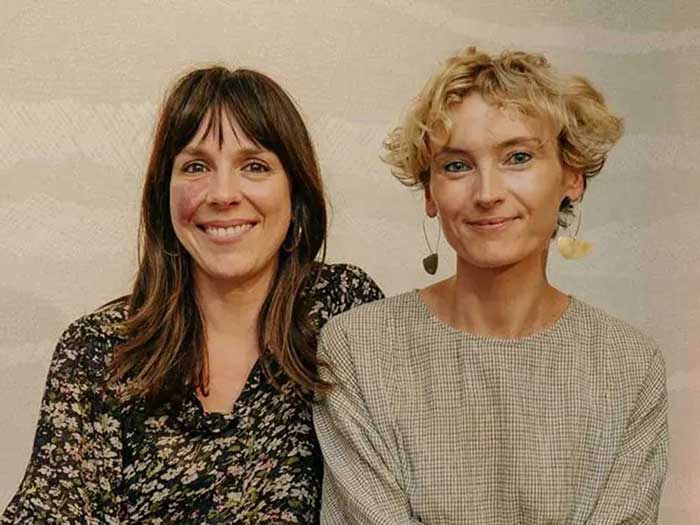Having recently launched our Autex Acoustics x Willie Weston collaboration, we felt this was the perfect time to share an insight into our partners. The Willie Weston team is composed of Jessica Booth and Laetitia Prunetti. The profit-for-purpose business that they have created is a powerful example of what can be achieved when we follow our passion. We sat down with them to find out where their inspiration comes from, how their model works, and how First Nations cultures have impacted them.

Jessica and Laetitia met at university in the early 2000s while completing their Masters of Art Curatorship. After university they both established careers in the visual arts, Laetitia in contemporary Australian (non-indigenous) art, whilst Jess spent time working with remote Indigenous artists and art centres in the Northern Territory. However, there was always a desire from both of them to do something that was completely their own. Spotting a gap in the market for First Nations design that translated into contemporary interiors, they started Willie Weston in 2015.

What inspired you to create Willie Weston? What did you want to achieve?
At the core of Willie Weston is a belief that First Nations art and design is beautiful, incredibly contemporary, and deserving of a much more prominent place in today’s built environments. Our business is built upon a fundamental drive to support artists by returning equitable, scalable, and meaningful income streams to them through our work. Our aim is to contribute towards viable livelihoods for artists, either on Country for remote area artists, or elsewhere.
What is your model for working with indigenous artists?
Willie Weston’s mission is to provide meaningful income for artists, often living in remote places. Fair and equitable payments are at the core of our business. We pay artists a fee for every metre of fabric or wallpaper produced, rather than a one-off licensing fee. These fees are paid quarterly based on the meterage sold by each artist in that quarter. This model extends to our partnership with Autex Acoustics, with the artists being paid a percentage commission on each panel sold.
In addition to these payments, artists receive a share of Willie Weston’s net profits at the end of each financial year. For the past two years, we have returned 30% of our net profits, yearly, to the artists we work with. This scalable and ongoing fee structure provides artists with regular income streams outside their main art practice.
How did the collaboration between Willie Weston and Autex Acoustics come to life?
Somewhat serendipitously. Willie Weston was increasingly being asked by clients to supply designs on acoustic panelling so we reached out to Autex Acoustics who, coincidentally, were wanting to create a First Nations collection. We made the connection at the perfect time for both our businesses.
How does Willie Weston fit within the broader conversation around Designing with Country?
Designing with Country is a particular framework/approach to working with First Nations culture, content, and people. It is a holistic approach to placemaking that engages deeply and fully with the communities upon whose land buildings are built. We see our work, and our partnerships with artists, as valuable contributions to the broader dialogue around the foregrounding of First Nations content in the built environment, and the value of cross-cultural partnerships in the design industry.
Has your understanding of First Nations art changed since starting Willie Weston?
I wouldn’t say it has changed necessarily. We have worked with and studied First Nations art for close to 20 years. We have never stopped being amazed and enlightened by the beauty, depth, and diversity of the works we are exposed to through Willie Weston, and the skill and generosity of the artists. However, we are certainly learning all the time from First Nations practitioners, both in terms of their cultural knowledge, and in our understanding of the most respectful way to engage with their culture through our work.

